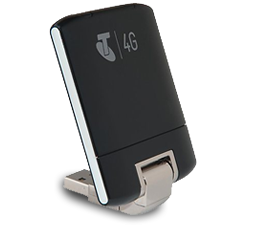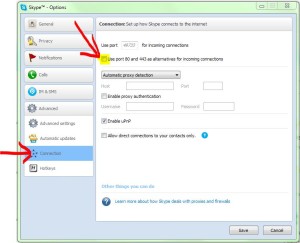4G wireless broadband is here and it’s really FAST! But better than that, it’s competitively priced when compared to the more common fixed line ADSL broadband internet connections. Well it’s a ‘no brainer’ then, lets all switch over to 4G… or should we?
 4G has proven itself to be a viable option to the more mainstream fixed line ADSL, with near 100% connectivity (obviously depends on your ISP and location but I get weeks at a time without loosing my connection).
4G has proven itself to be a viable option to the more mainstream fixed line ADSL, with near 100% connectivity (obviously depends on your ISP and location but I get weeks at a time without loosing my connection).
Then there is the question of the quality of that connection. Well I get a stable speed and negligible packet loss so for all intensive purposes it can be considered a ‘good connection’.
What about speed? Well the speed knocks the socks off old fashioned ADSL and ADSL2+ with me getting an easy 40Mbps. Now compare this to the absolute theoretical maximum of 21Mbps for ADSL2+ (but in reality one gets circa 10Mbps) and there’s a clear winner here. But it doesn’t stop there. The 4G wireless connection has already achieved a recorded 83Mbps here in Australia and 4G still boasts a theoretical maximum of 150Mbps.
And what does all this cost?
Well the ISP’s are all setting out their shops around ‘data allowances’ with 4G wireless broadband plans offering unshaped speed (because they can’t do anything else) and data allowances circa 2GB, 5GB, 10GB and 20GB. Yes, this is vastly different to fixed line ADSL offerings with it’s 50Gb, 250GB and ‘Unlimited’ plans but for a very large section of the market, these plans are ample. The smaller plans (up to 10GB) are actually cheaper than their fixed line counterparts with only the 20GB offering being more expensive than a fixed line alternative.
So perhaps there’s the first clue to the ‘Hidden Cost of 4G Wireless Broadband Internet’.
The small (data allowance) plans are cheap but carry hefty penalties for exceeding your limit. If you upgrade to the largest plan it ends up being more expensive than good old ADSL. But you say, all this can be avoided by managing your usage… and here comes the rub!
No, your data usage CANNOT be managed, or at least not without making some technical changes on your part!
The superbly fast connection is at the same time very deceptive. In the past with a slower connection your internet habits were ‘tailored’ to your speed. What I mean by this is the way you used the internet and ‘surfed the net’ was adapted to the speed of your connection. Often you would shy away from bandwidth intensive sites or not wait for pages to fully load or simply skip certain video advertisements or intros – all of these actions having saved you valuable data allowance. Not so anymore with a 4G connection. The pages load so fast that you are now no longer aware of these data hungry pages and soon your data usage escalates.
And then there’s Skype and YouTube (and any other audio visual application for that matter).
Most of these AV (audio visual) applications tailor their product according to your connection ( available speed). Yes, if you have a fast connection, they’ll send you the best quality feed BUT that’s also the most data! For example:
- 720p video streaming uses about 7Mb/minute BUT 1080p (what you’ll get with 4G) video streaming jumps massively up to 30Mb/minute
- Skype audio uses about 1Mb/minute but that doubles to 2Mb/minute on a 4G connection
- Skype video that used to use about 8Mb/minute now triples with 4G to 24Mb/minute
Suddenly those little chats to the grandchildren on Skype or watching those little YouTube clips are no longer a few GB per month… they become 3 or 4 times that… AND NOW YOU ARE OVER YOUR DATA ALLOWANCE and hey presto… your 4G connection suddenly has cost you a whole lot more than you thought.
But it’s not over yet!
Skype has a little unknown character trait… it is based on P2P (peer to peer) technology. What this means is Skype relies on your installation of Skype on your PC to help fetch and carry other peoples conversations…! If you have a fast connection (like 4G) then you are a prime candidate for Skype and you will be unwittingly offering up your internet connection for this P2P process. End result is your data allowance gets eaten up by other people Skype chats!
Let me just repeat that, while your PC is running and connected to the internet, Skype is using your bandwidth for it’s own good… at the expense of your data allowance… AND THIS WILL TRIPLE YOUR MONTHLY USAGE!
… And that’s the hidden cost of 4G, it being such a good fast internet connection makes it very attractive to Skype and it’s P2P process which in turn can ramp up your monthly data allowance 3 fold. Suddenly those small data plans being offered by your ISP are just completely insufficient and you find yourself in the murky waters of paying ‘over usage’ charges and penalties – all of which makes 4G prohibitively expensive.
–
Note:
 (There is a simple ‘fix’ to all of this… remove a single ‘tick’ in the Skype options as shown adjacent [under ‘advanced>>connections’] and that’ll stop Skype’s P2P process from hijacking your PC and your data allowance, which in turn will bring your data usage back under control.)
(There is a simple ‘fix’ to all of this… remove a single ‘tick’ in the Skype options as shown adjacent [under ‘advanced>>connections’] and that’ll stop Skype’s P2P process from hijacking your PC and your data allowance, which in turn will bring your data usage back under control.)